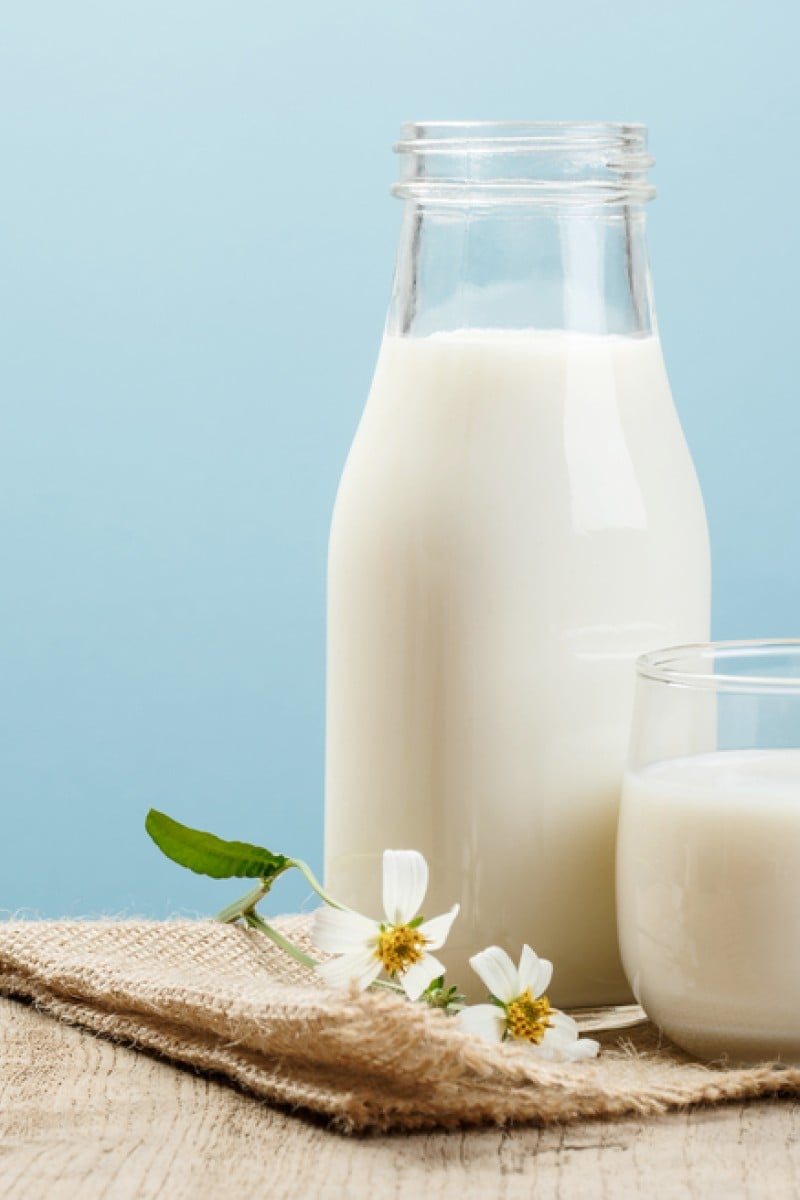
A guide to the impact of cow's milk, almond milk, and soy milk on your health and the environment
Young Post compares the impact that cow, soy, and almond milk can have on our health and the environment, their prices, and possible alternatives

If you’re thinking about switching from cow’s milk to a plant-based alternative such as almond milk or soy – whether for health or environmental reasons – it’s useful to first find out just what each alternative provides, not to mention the impact it’s having on the planet.
We compared the carbon footprint, water footprint, nutritional value and price of cow, soy and almond milk to see just how each one measures up.
Carbon footprint
The term “carbon footprint” refers to the amount of carbon dioxide – the gas which causes global warming – released into the atmosphere as a result of a certain activity. You may already be aware that dairy farms are no friends of the environment; as well as contributing to CO2 emissions, cows also release an even more harmful greenhouse gas – methane – into the atmosphere. But does switching to plant-based milk really help to reduce your carbon footprint?
Fried chicken taste test: Where to find the best fast food versions in Hong Kong
According to a 2014 study published in the academic Journal of Industrial Ecology, for every cup of cow’s milk that is produced, 400 grams of carbon dioxide is released into the atmosphere. This is compared to 200 grams per cup of soy milk, and 174 grams per cup of almonds.
However, as it doesn’t take one cup of almonds to produce one cup of almond milk – most almond milk sold in shops will contain around five almonds per cup of milk – it’s safe to assume that the carbon emissions for almond milk are actually even lower.
Water footprint
While this term may not be as familiar as carbon footprint, it’s just as important. A water footprint measures how much water – either fresh water, water naturally occurring in the ground, rainwater, or all three – is needed to produce something.
A 2011 study in science journal Hydrology and Earth System Sciences Discussions found it takes a total of 242 litres of water to produce a cup of cow’s milk, 132 litres for a cup of soy milk, and 38 litres for a cup of almond milk. In the case of cow’s milk, only a small percentage of that is actually drinking water for the cows. Most of the water goes toward growing the crops which are then used to feed them. Cutting this out, therefore, vastly reduces the amount of water needed to produce a cup.
20 useful food idioms to spice up your writing
Nutrition
Cow’s milk hasn’t been faring very well so far when compared to plant-based alternatives, but there may be another reason why it remains so popular.
Cow’s milk contains a lot of natural vitamins and minerals that the body needs, which don’t naturally occur in plant-based milk, such as calcium and vitamins D and B. However, you can find versions of these drinks which have these nutrients added to them, to help you replace any lost by cutting out cow’s milk from your diet.
In general, one cup of semi-skimmed cow’s milk provides eight grams of protein – an amount matched only by soy milk, which provides between six and nine grams of protein. One cup of almond milk, meanwhile, contains just one gram of protein.
Calorie-wise, both cow’s milk and soy milk contain around 110 calories per cup, but almond milk provides only around 30 calories.
Cow’s milk also contains around 12 grams of naturally-occurring sugar, while all the sugar found in soy and almond milk is added sweetener, for flavour. Of course, you can choose unsweetened soy and almond milk if you prefer, which contains only trace amounts of sugar.
It’s worth bearing in mind, too, that soy milk in particular can vary greatly in quality. Look for organic soy milk products made from whole soy beans, rather than processed soy, as these offer the biggest health benefits.
Qualified personal trainer shares 5 tips on how to avoid workout injuries
Price
Based on prices found in most supermarkets in Hong Kong, you can expect to pay between HK$20 and HK$25 for a 950ml carton of cow’s milk, but if you opt for organic cow’s milk, it will cost between HK$25 and HK$35. Soy milk can cost anywhere between HK$15 and HK$25, depending on whether you choose basic milk made from processed soy protein, or organic milk. Almond milk is the most expensive of the three, at around HK$35 for a 950ml carton.
What other options are there?
But what if neither cow’s milk, soy milk, nor almond milk works for you? If you’re lactose intolerant, or have a nut or soy allergy, give rice or oat milk a try. These are suitable for virtually all dietary requirements. Banana milk is another alternative that is growing in popularity, thanks to its naturally creamy taste and high nutritional value.
